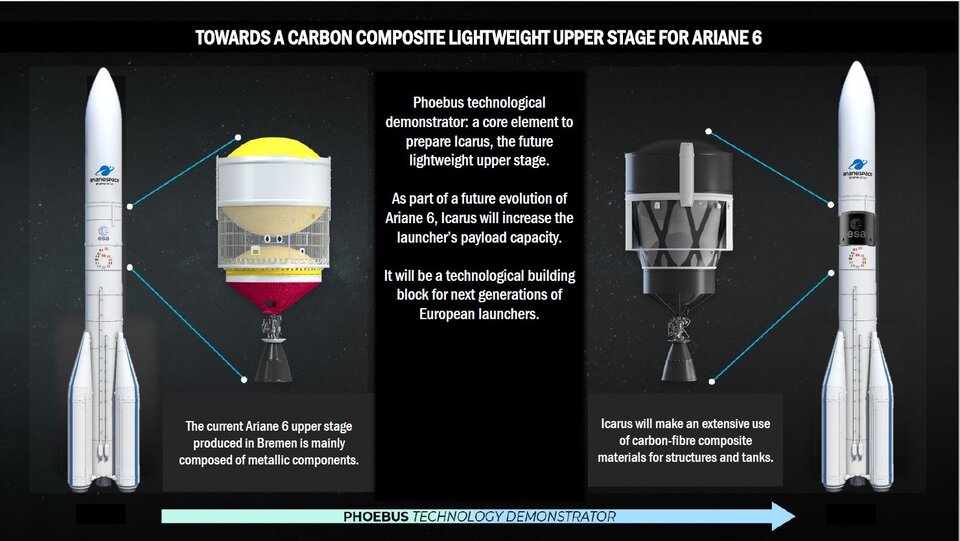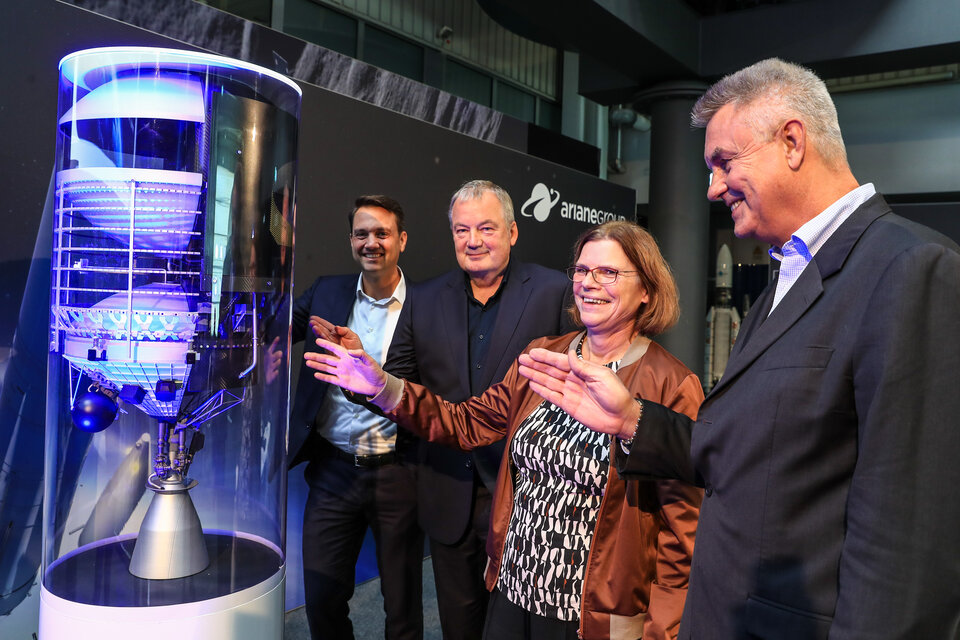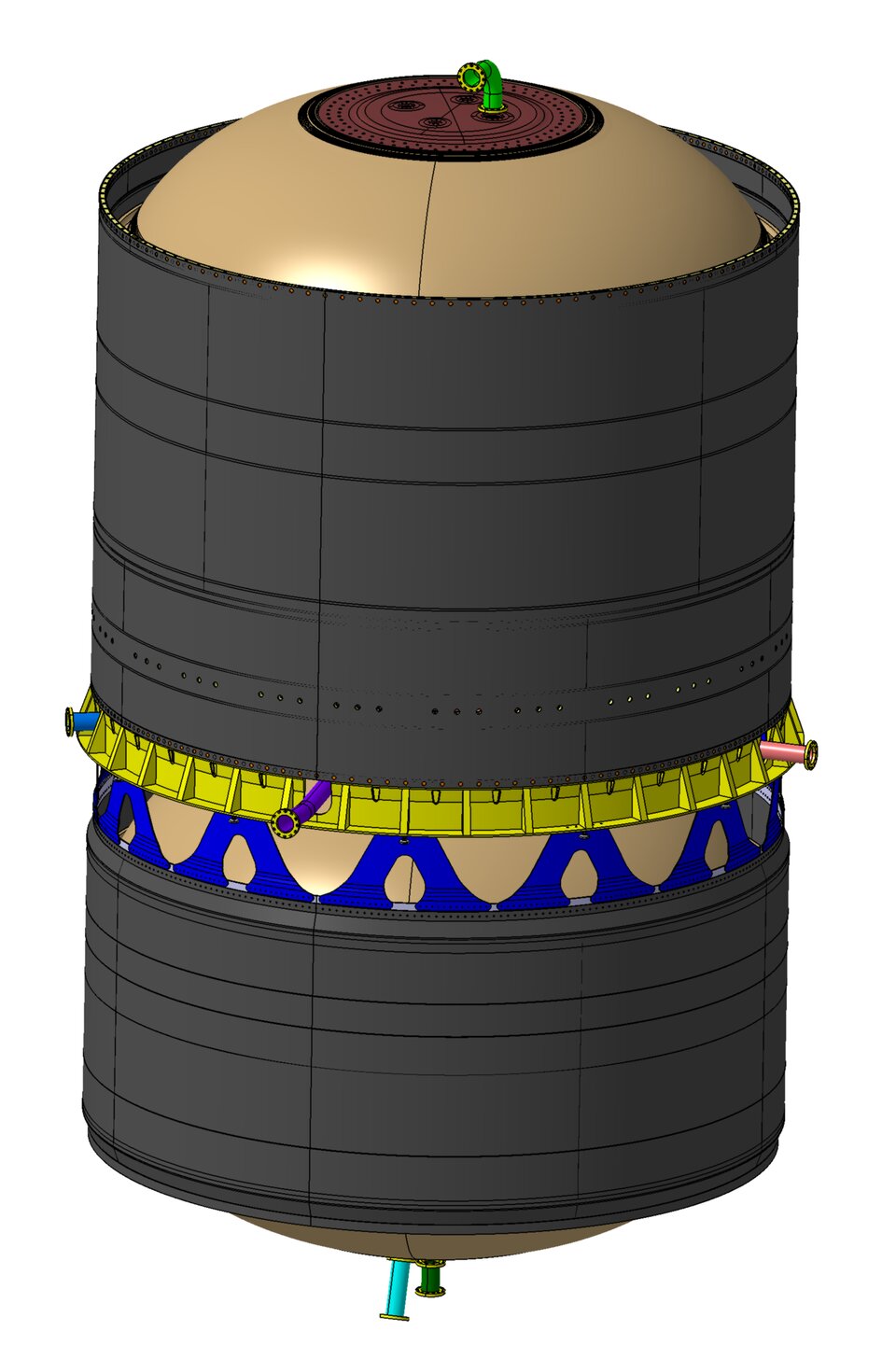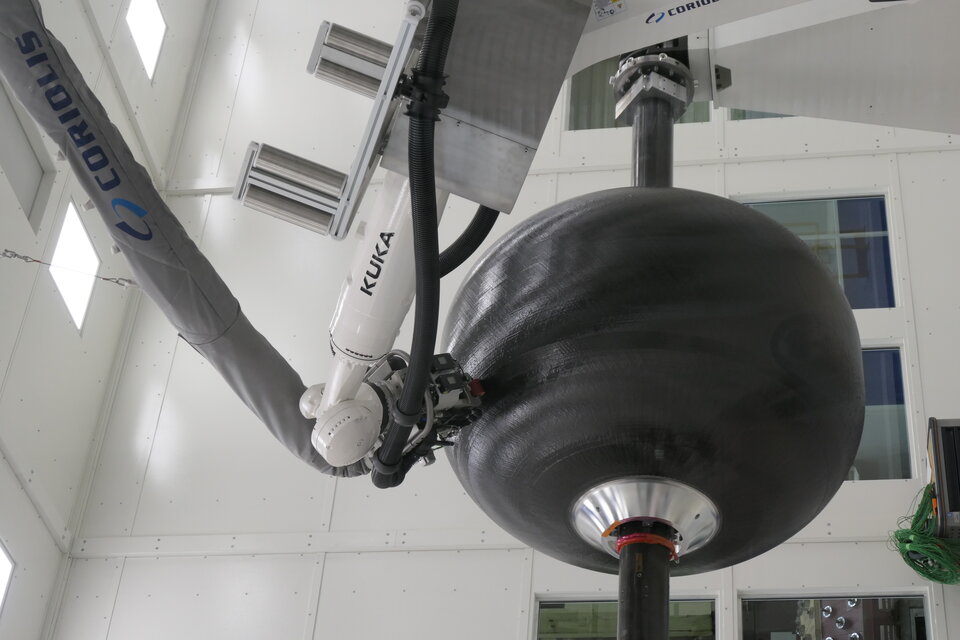ESA contracts ArianeGroup to press ahead with full-scale demonstrator of carbon fibre “black stage” to boost launch performance
By reducing the mass of rocket stages, ESA hopes to increase payload-to-orbit performance. That is the objective of a programme called PHOEBUS (Prototype of a Highly OptimisEd Black Upper Stage), which aims to produce upper stage tanks and structures in carbon fibre. Now, following completion of the project’s preliminary design review, ESA has contracted prime contractor ArianeGroup to build a full-scale upper stage demonstrator.
The €50 million agreement – a rider to an earlier contract for design studies – will demonstrate the feasibility and benefits of carbon-fibre tanks and structures applied to high-impulse hydrogen and oxygen cryogenic propellants. The agreement was signed in Bremen, Germany by ESA Head of Future Space Transportation Rüdeger Albat, on behalf of ESA Director of Space Transportation Daniel Neuenschwander, and Karl-Heinz Servos, head of ArianeGroup’s Industry Directorate.
These so-called “black stages” – named after the distinctive colour of carbon fibre structures – could become a feature of future European rockets. The weight reduction offered by a Phoebus stage could increase payload performance by up to 2 tonnes – with the added benefit of lower production costs compared to traditional metal structures.
Phoebus is also an important step on the way to reusable upper stages, which require ultra-lightweight tanks for green propellants.

Work done to-date has demonstrated that carbon fibre composites can be used for the tanks needed to handle cryogenic hydrogen and oxygen. Carbon composite materials can be chemically very reactive with oxygen, dictating careful selection of the resins and fibre materials which make up these strong but light structures.
Replacing metal with carbon composites will reduce the mass of the upper stage and therefore gain payload performance. These materials will also open the way to innovative new designs for tanks and structures.
Albat said: “Phoebus promises to unlock significant cost, sustainability and performance gains. This work may also deliver spin-off benefits in other aerospace applications – for example in aircraft, where hydrogen fuel may one day deliver significant environmental benefits.”

ArianeGroup has worked closely with MT Aerospace to develop design and manufacturing technologies needed to realise cryogenic tanks and adjacent structures in carbon fibre. MT Aerospace has established in Augsburg the capacity to manufacture carbon fibre structures and tanks up to 3.5 m in diameter.
Germany’s DLR aerospace institute will be in charge of evaluating the Phoebus demonstrator’s performance with cryogenic hydrogen and oxygen at its test centre in Lampoldshausen, Germany.
The Phoebus project is part of the Future Launchers Preparatory Programme of ESA’s Directorate of Space Transportation.



